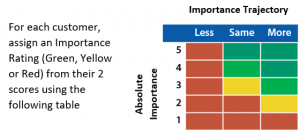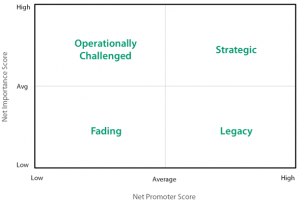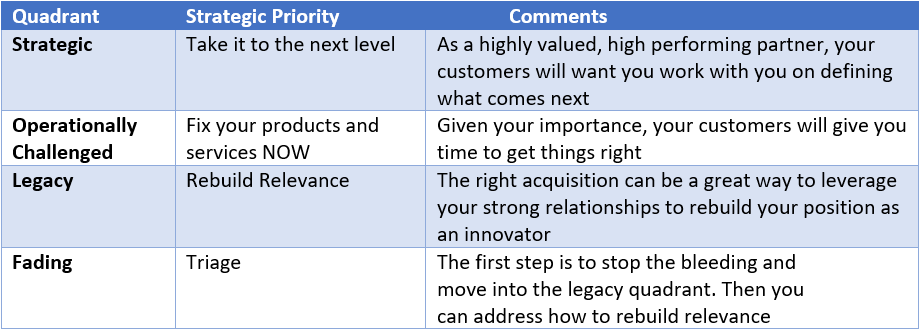This Topline Strategy Blog Post has also been published on Gainsight’s Website as part of their “What is B2B Customer Experience” collection of posts. We announced a partnership with Gainsight last year.
The Importance of “Importance”
“They have been a great partner. But as we look to the future, we’re rethinking how we do things and there are other firms out there that are better aligned with where we are headed. They aren’t going away for a long time, but I don’t see us expanding with them.” – NPS 9
“We’ve been at the implementation for 9 months and we are 6 months behind. The experience has been horrible. But, there is nothing else on the market that does what we need and it is critically important to us. We’re committed to seeing this through.” – NPS 3
In just 3 sentences each, these two customers exemplify one of the fundamentals of B2B tech – fueled by constant innovation, the market landscape is always changing. In the first case, despite having a long, successful relationship, the customer is moving away from the company and toward a new set of competitors that are better aligned with where the customer is going. In the second case, despite a terrible experience, the customer sees the company’s solution as highly differentiated and is willing to work through the pain to reach the end of the rainbow.
As a CX professional, how do you bring insight into changing market dynamics to your program and help your company set the right priorities? The answer: By adding importance to customer measurement.
Importance Questions
Based on the experience gained from our StrategicCX Practice, we have determined that measuring importance actually requires asking two questions – as what matters is not just how important your company is to its customers today, but how important you’ll be in the future.
- Absolute Importance: On a scale of 1 to 5 (5 highest), how important is <Company/Product> to your business?
- Importance Trajectory Is <Company/Product> becoming more important, less important or staying about the same?
These two scores are then combined into an importance rating for each customer –Green, Yellow or Red – using the following table:
Combining Absolute Importance and Importance Trajectory into a Customer Rating

Red:
- Any customer whose importance is decreasing– decreasing importance is always a negative
- Any customer with an Absolute Importance of 1 – a 1 is always a negative
- Customers with a score of 2 and are staying the same – being stuck at a 2 is negative
Yellow:
- Customers with a 3 that are remaining the same – being stuck at an average score isn’t bad, but isn’t good either
- Customers with a 2 that is increasing – as they have the chance to climb into average territory
Green:
- Any customer with a high score 4 or 5 that is staying the same or increasing – as they will continue to have a high score
- Customers with a 3 that are increasing – as they have the opportunity to climb to a high level of importance
Net Importance and the NPS – Importance Matrix
The final step in using importance create a Net Importance Score (% Green – % Red) and then map that against NPS. Which quadrant your company falls, defines the company’s overall position and top priorities

Note: What is a high or low NPS score depends on your industry as some industries have inherently higher NPS scores than others. Topline’s benchmark for an average Net Importance Score is 50. Above 50 puts you in the top half, below 50 puts you in the bottom half.

In Conclusion
Finally, let’s revisit the two companies introduced at the beginning of this post.
- The first company clearly falls into the Legacy quadrant. They are well-regarded but are losing strategic relevance. For them, the imperative is how to regain their momentum.
- The second company falls into the Operationally Challenged quadrant. For them, fixing their product and service issues is job one – but thankfully their customers will give them time to do so and if they do, they will move into the Strategic quadrant.
Without understanding importance, these companies would have a major blind spot. Only by understanding importance and NPS together is it possible for them to set the right priorities for the business.
If you would like to understand how important you are to your customers contact us at info@toplinestrategy.com.

